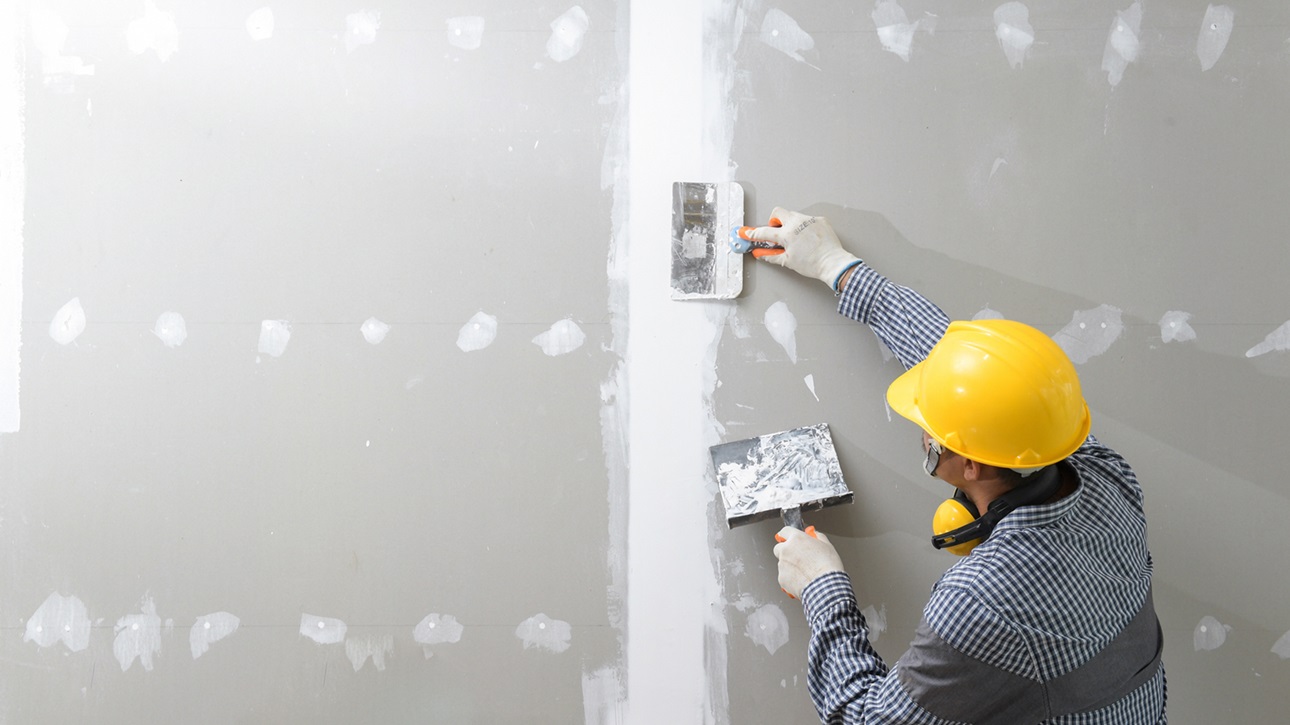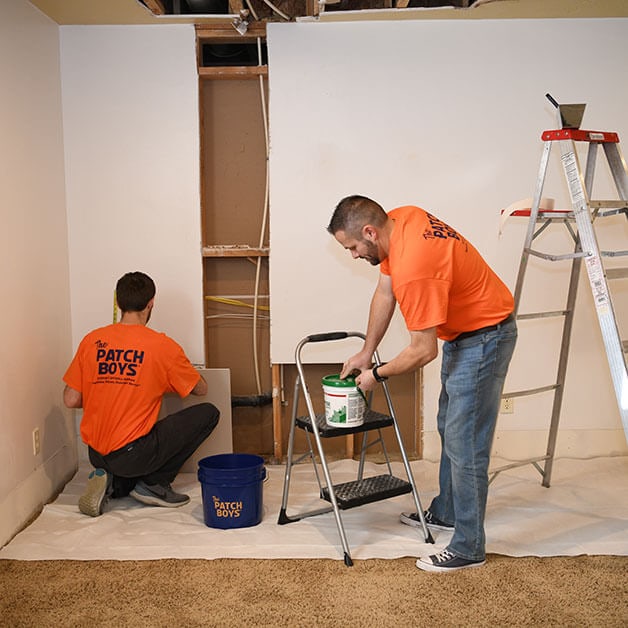Efficient Drywall Repair Techniques to Restore Your Wall surfaces
Efficient Drywall Repair Techniques to Restore Your Wall surfaces
Blog Article
Drywall Setup Made Easy: Tips for Perfect Results
Drywall setup is frequently regarded as a difficult job, yet with the ideal approach and understanding, it can become a workable undertaking. Grasping strategies for cutting, hanging, and ending up drywall can substantially influence the outcome.
Selecting the Right Products
Choosing the ideal materials for drywall installment is essential to attaining a sturdy and aesthetically pleasing finish. drywall installation. The primary component, drywall sheets, generally can be found in various thicknesses, with 1/2-inch sheets being typical for indoor wall surfaces. For areas requiring additional dampness resistance, such as bathrooms or kitchens, think about using environment-friendly board or cement board, which are specifically created to withstand humidity

In addition, choosing the best bolts-- either nails or screws-- is crucial for protecting the drywall to the framing. Drywall screws are usually favored for their holding power and reduced threat of popping. Last but not least, consider the finishing touches such as primer and paint, which not only improve the appearance however also safeguard the drywall from moisture and wear.
Preparing the Installment Location
Prior to beginning the drywall setup procedure, it is necessary to prepare the installation location extensively. A tidy work space lessens the danger of damages to existing products and allows for reliable motion throughout setup.
Following, inspect the walls and ceiling for any type of imperfections, such as cracks, openings, or mold. Address these problems in advance; spot any kind of damages and allow adequate time for fixings to dry. In addition, make sure that electric outlets, switches, and pipes are correctly placed and accounted for, as this will affect drywall placement.
Think about the ecological problems. A stable temperature level and humidity degree are crucial for optimal bond and performance of the drywall products. If required, make use of a dehumidifier or heating unit to develop appropriate conditions.
Cutting and Hanging Drywall
The trick to reliable drywall installation exists in the precise cutting and hanging of the panels. Begin by measuring the area precisely, considering any kind of obstructions such as electric outlets or home windows. Use a straight side and an energy blade to rack up the drywall along your measurements, then break it along the racked up line for a tidy break. For even more elaborate cuts, such as around outlets, a drywall saw can be made use of for precision.

Always function from the top down and delegated right, making sure that you keep a staggered pattern to enhance security. Properly hanging the drywall establishes the structure for a smooth surface, inevitably bring about exceptional results in your drywall job.
Insulation and Mudding Techniques
While proper cutting and hanging of drywall sets the stage, the next important action entails mastering taping and mudding strategies to guarantee a smooth surface. Insulation is essential for enhancing joints and preventing cracks; it includes installing tape into the used joint compound (mud) Beginning with a top quality fiberglass or paper tape, using the tape over the joint and pushing it into the damp mud making use of a taping blade, guaranteeing no air bubbles remain.
When the tape is in area, use a slim layer of joint substance over the tape, feathering the edges to produce a smooth shift to the drywall surface area. Enable this layer to completely dry entirely prior to you could try these out sanding it gently to eliminate flaws. Repeat this process, using additional coats of mud as required-- typically 2 to three coats-- while progressively widening the application location with each layer to achieve a seamless look.
After the final coat dries out, sand the surface with a fine-grit sandpaper until smooth. sheetrock repair fort worth. Remember to use a mask throughout sanding to avoid inhaling dirt bits. Grasping these taping and mudding strategies is essential for accomplishing a professional-quality finish in your drywall installation
Ending Up Touches for Perfection
Attaining a perfect drywall installment surpasses mudding and taping; it culminates in the completing touches that go right here boost the total look. These final steps are essential in ensuring a professional-grade coating that improves the visual appeals of your room.
Begin by sanding the dried joint compound to create a smooth surface. Utilize a fine-grit sandpaper click here for info and a sanding block or pole sander for optimal control. Pay specific focus to edges and sides, as these locations have a tendency to need more meticulous job. After sanding, wipe down the wall surfaces with a damp cloth to eliminate any kind of dust fragments, guaranteeing a clean surface area for painting.
Next, apply a guide specifically made for drywall. This step is crucial, as it helps secure the joint substance and offers a consistent base for the topcoat. When the guide dries, check for any kind of flaws, and repair as required.
Final Thought
In verdict, successful drywall setup rests on the careful choice of materials, thorough preparation of the installment location, and precise execution of reducing and hanging strategies. Mastery of taping and mudding procedures is important for achieving a smooth finish. In addition, focus to finishing touches, including priming and touch-ups, makes sure a professional-grade outcome. By sticking to these guidelines, the quality of craftsmanship can be dramatically boosted, contributing to the overall aesthetic and performance of the area.
Drywall setup is commonly viewed as an overwhelming job, yet with the appropriate strategy and expertise, it can come to be a workable venture.Choosing the suitable materials for drywall installation is crucial to achieving a sturdy and cosmetically pleasing coating.Before beginning the drywall installation procedure, it is necessary to prepare the setup area thoroughly. Understanding these taping and mudding strategies is vital for accomplishing a professional-quality finish in your drywall installment.
In final thought, successful drywall installment pivots on the cautious selection of products, extensive preparation of the installment location, and accurate implementation of cutting and hanging techniques.
Report this page